25+ Sample Teacher Checklist
-
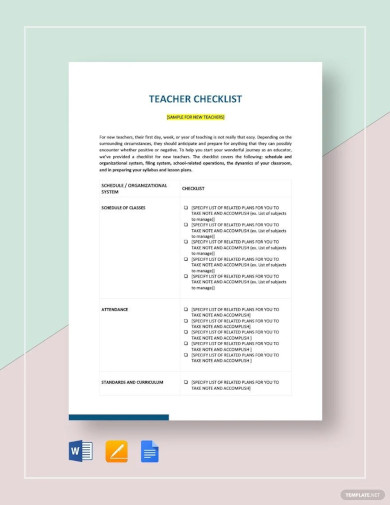
Teacher Checklist
download now -

Teacher Training Checklist
download now -
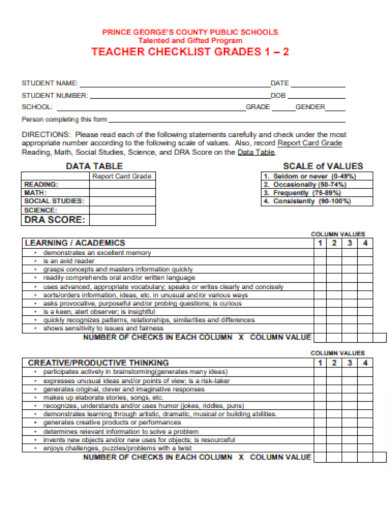
Teacher Checklist Grade
download now -
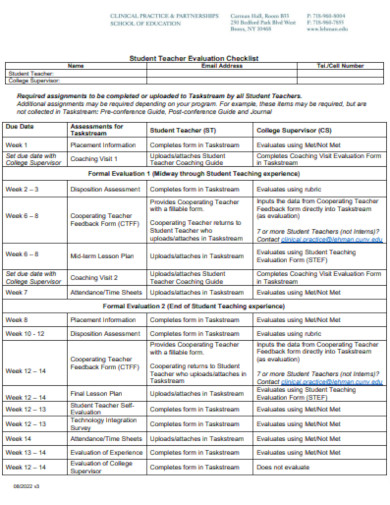
Student Teacher Evaluation Checklist
download now -
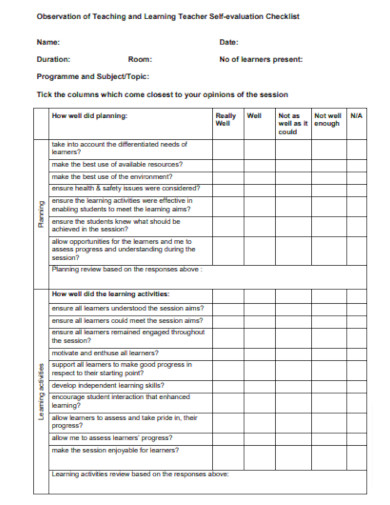
Teacher Self-evaluation Checklist
download now -
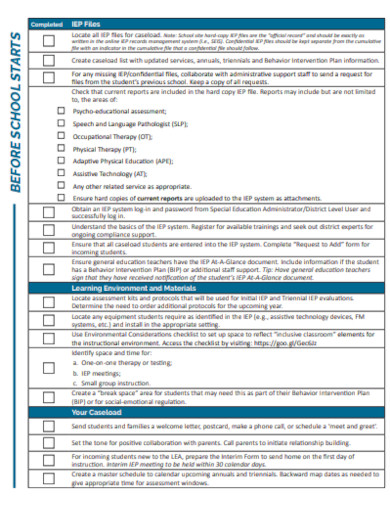
Teacher Special Education Checklist
download now -
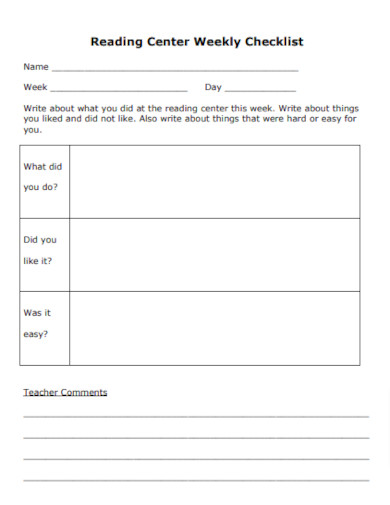
Teacher Weekly Checklist
download now -
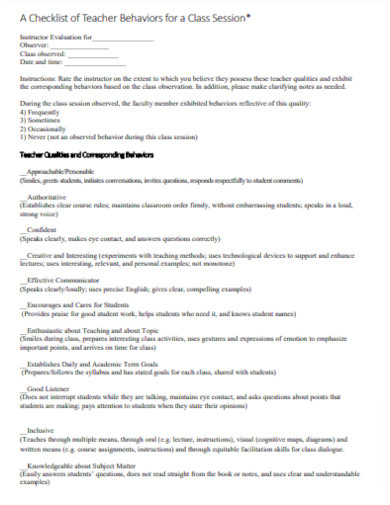
Teacher Behavior Checklist
download now -
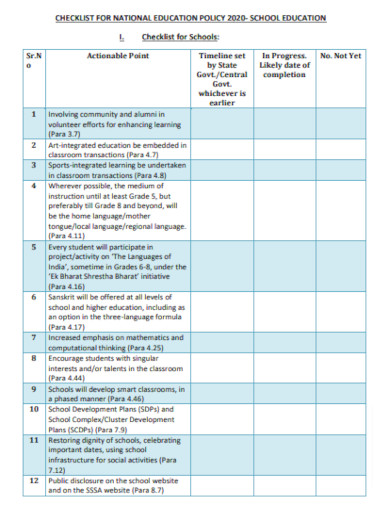
Teacher Primary School Checklist
download now -
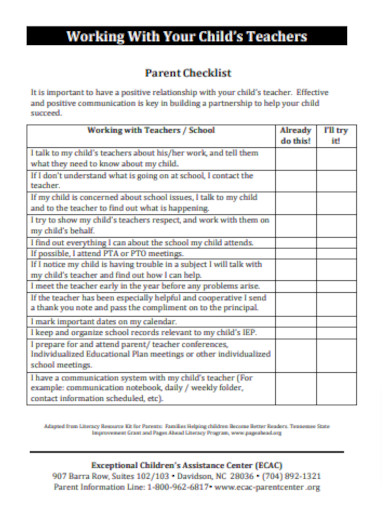
Teacher Child Checklist
download now -

Parent Teacher Checklist
download now -
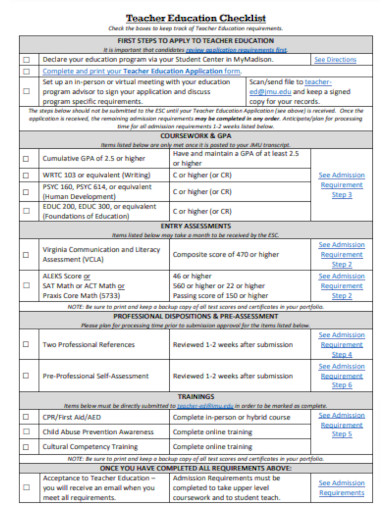
Teacher Education Checklist
download now -
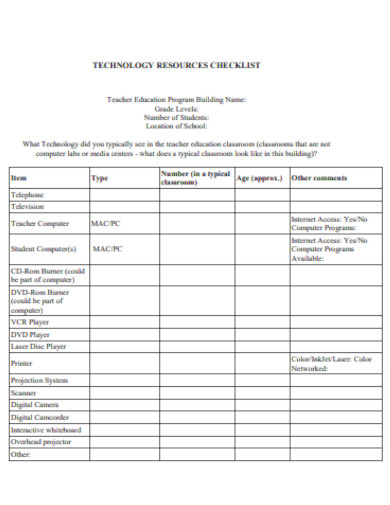
Teacher Learning Checklist
download now -
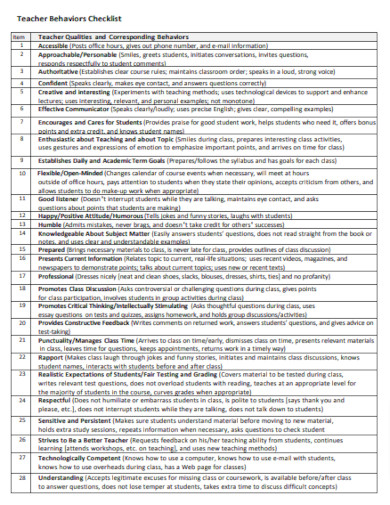
Teacher Daily Checklist
download now -

Teacher Checklist Outline
download now -
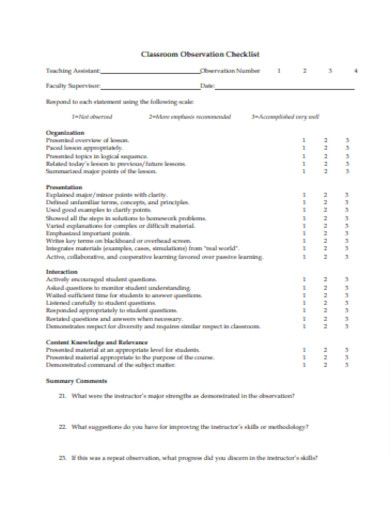
Teacher Observation Checklist
download now -
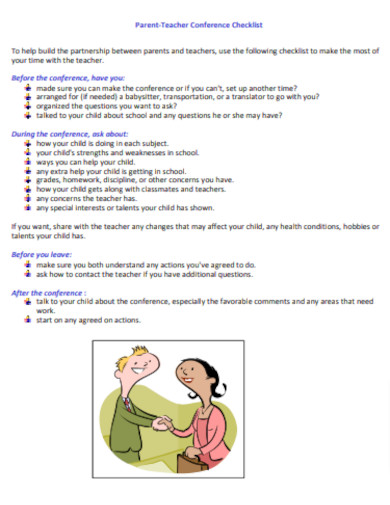
Teacher Conference Checklist
download now -
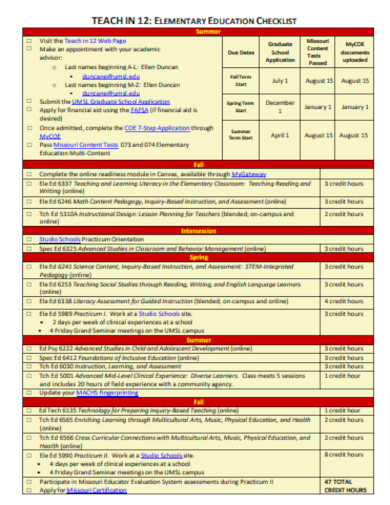
Teacher Elementary Checklist
download now -
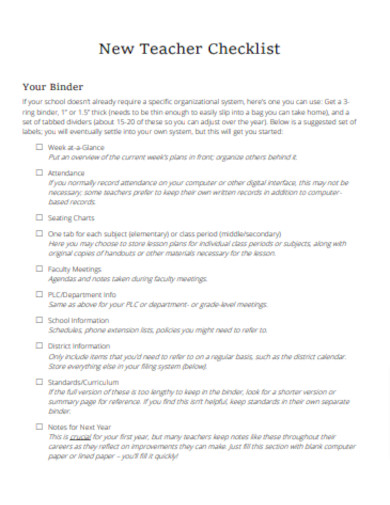
Teacher School Checklist
download now -

Teacher Classroom Checklist
download now -
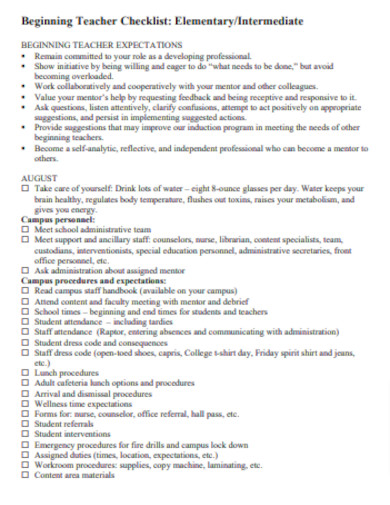
Beginning Teacher Checklist
download now -
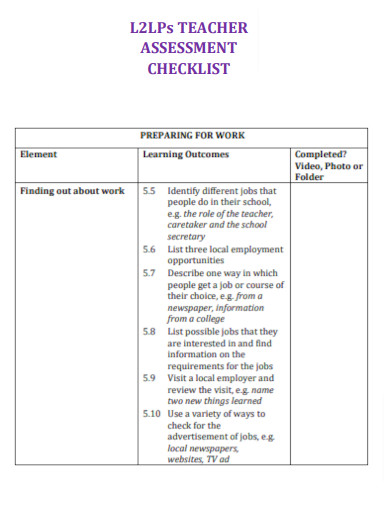
Teacher Assessment Checklist
download now -
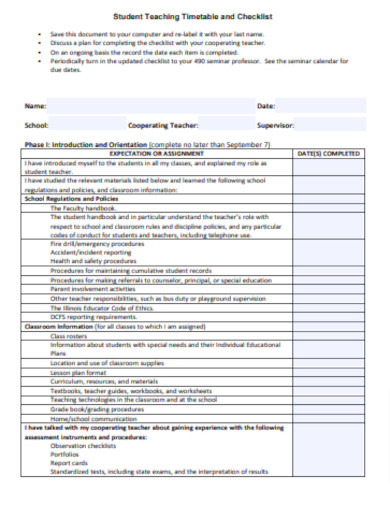
Student Teacher Checklist
download now -

Preschool Teacher Checklist
download now -
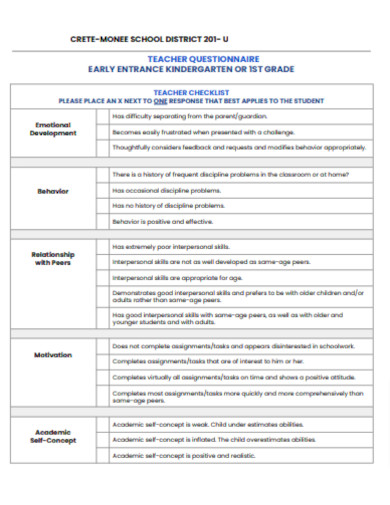
Kindergarten Teacher Checklist
download now -
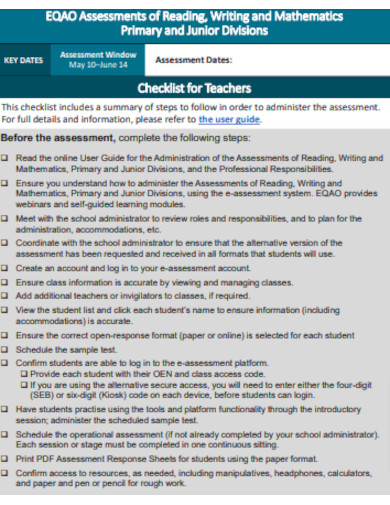
Math Teacher Checklist
download now
FREE Teacher Checklist s to Download
25+ Sample Teacher Checklist
I. Preparation and Organization
II. Classroom Environment
III. Instructional Materials
IV. Student Engagement and Participation
V. Assessment and Feedback
VI. Classroom Management
VII. Professional Development
VIII. Health and Well-being
IX. Communication
X. Technology Integration
FAQ’S
Can the checklist be used for online or virtual teaching?
Do I need to follow every item on the checklist?
Should I involve students in the creation or modification of the checklist?
Can I share my teacher checklist with parents or guardians?
How does a teacher checklist differ from a lesson plan?
Is there a one-size-fits-all teacher checklist?
In the vast realm of education, the role of a teacher is undoubtedly crucial. However, amidst the numerous responsibilities and constantly changing challenges that educators encounter, it is often simple to neglect certain vital components that can determine the success or failure of a teaching experience. This is where an indispensable teacher checklist becomes invaluable.
I. Preparation and Organization
As the adage goes, “Fail to prepare, prepare to fail.” In teaching, preparation is paramount.
- Updated lesson plans: These are the roadmap of teaching, detailing the course of instruction and ensuring alignment with curriculum standards.
- Classroom layout optimization: A well-thought-out arrangement can facilitate better student engagement, collaboration, and focus.
- Essential teaching resources at hand: Whether it’s a projector remote, markers, or supplementary materials, having them within reach is crucial.
- Backup activities for unforeseen changes: Sometimes, lessons don’t go as planned. Having backup activities can salvage a potentially wasted period.
II. Classroom Environment
A conducive environment is integral to effective learning.
- Safety protocols in place: From fire drills to lockdown procedures, safety first.
- All equipment functioning and accessible: Malfunctioning equipment can disrupt lessons. Regular checks help.
- Comfortable temperature and lighting: Optimal conditions can significantly enhance attention spans.
III. Instructional Materials
Teaching tools enhance understanding and keep lessons fresh.
- Updated textbooks or e-books: Ensure materials reflect the latest in educational research and standards.
- Multimedia resources: Videos, audio clips, and interactive modules can cater to varied learning styles.
- Supplementary handouts or worksheets: These can reinforce concepts and offer additional practice.
IV. Student Engagement and Participation
Active student involvement augments comprehension and retention.
- Tools for active learning: Think clickers, interactive whiteboards, or even tactile learning tools.
- Strategies for diverse learning styles: Some are visual learners, some auditory. Catering to this diversity is vital.
- Plan for group discussions and activities: Peer interactions can foster deeper understanding and collaborative skills.
V. Assessment and Feedback
Continuous evaluation facilitates academic growth.
- Updated rubrics for assignments: Clarity in expectations and assessment criteria ensures objectivity.
- Systems for providing timely feedback: Feedback report, when immediate, is most effective.
- Tools for formative and summative assessments: Quizzes, projects, exams—varied tools offer a holistic view of a student’s progress.
VI. Classroom Management
Effective management equals smooth sailing lessons.
- Clear behavior guidelines established: Setting the ground rules early prevents potential chaos.
- Rewards and consequences system: Reinforce positive behavior and address the negative.
- Seating arrangement that fosters focus and collaboration: A good seating plan can be the difference between an orderly class and a disruptive one.
VII. Professional Development
Growing as an educator enhances the learning experience for students.
- Recent training or workshops attended: Continual learning keeps teaching methods updated and effective.
- Current educational research or articles: Staying abreast of the latest in pedagogy enriches lessons.
- Networking with other professionals: Sharing insights, strategies, and resources elevates teaching quality.
VIII. Health and Well-being
Teachers are also caretakers.
- First-aid kit and training: Being prepared for minor mishaps can save the day.
- Knowledge of students’ medical concerns: This awareness ensures student safety and well-being.
- Strategies for promoting mental health and well-being: A mentally sound student is more receptive and engaged.
IX. Communication
Bridging the home-school gap fosters student success.
- Updated contact list of parents/guardians: Regular communication keeps everyone on the same page.
- Plan for regular parent-teacher interactions: This collaborative approach ensures the best for the student.
- Systems for updating parents on student progress: Progress reports, online portals, or even simple emails can work wonders.
X. Technology Integration
Tech in classrooms isn’t the future; it’s the now.
- Functional devices and software: Outdated tech can hinder rather than help.
- Backup plan for technical issues: Because tech can be unpredictable.
- Online safety protocols: With increasing digital interaction, safety becomes paramount.
In essence, this comprehensive checklist, when employed diligently, can pave the way for a successful academic year. It’s the backbone of every thriving classroom, ensuring every aspect of teaching and learning is accounted for.
FAQ’S
Can the checklist be used for online or virtual teaching?
Absolutely! While the traditional checklist is geared more towards physical classrooms, many of its elements are applicable to online teaching. Moreover, given the rise of digital education, it might be beneficial to create a separate section within your checklist specifically for virtual teaching essentials.
Do I need to follow every item on the checklist?
While the checklist provides a broad overview of recommended practices, it is adaptable. Depending on the specific needs of your classroom, school policies, and individual teaching style, you might prioritize certain items over others. The checklist serves as a foundation upon which you can build based on your unique circumstances.
Should I involve students in the creation or modification of the checklist?
Engaging students in the process can offer invaluable insights. They can provide feedback on classroom practices, teaching methods, and resources that are most beneficial to their learning experience. Their perspective can help in refining the checklist to better cater to their needs.
Can I share my teacher checklist with parents or guardians?
Certainly! Sharing the checklist with parents can foster transparency and collaboration. When parents understand the processes and preparations behind the teaching, they’re more likely to support and collaborate in their child’s education.
How does a teacher checklist differ from a lesson plan?
While there’s some overlap, a lesson plan specifically outlines what will be taught in a particular lesson, including objectives, materials, and assessment methods. A teacher checklist, on the other hand, encompasses broader teaching practices, classroom management strategies, and preparation tasks, ensuring holistic readiness.
Is there a one-size-fits-all teacher checklist?
No. While there are standard practices and elements commonly found in many checklists, teaching is a personal and often context-specific profession. It’s essential to adapt and modify the checklist to best suit your classroom, students, and teaching philosophy.
The role of a teacher in today’s world is multifaceted, demanding, and incredibly vital. With this essential checklist, educators are better equipped to navigate the complexities of modern classrooms, ensuring that each student not only learns but thrives. Whether you’re a seasoned educator or just beginning your teaching journey, this checklist serves as a beacon, guiding you towards unparalleled success in the noble art of teaching.
